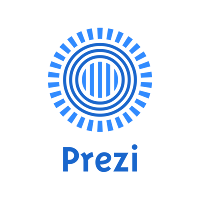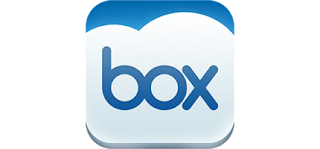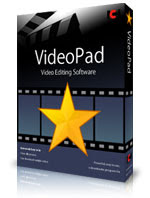Scores are given out of Five Shark Teeth with the following meanings.
MOODLE



Moodle is a browser-based interface allowing students and instructors to interact with each other. Each course on Moodle has its own website with content provided by the instructor. Course materials such as the syllabus can be made available for download and assignments can be submitted online. Some courses have entirely online assignments, such as forum or chat interactions. Moodle has great intentions and is very useful in real-life, but portions of the implementation make interactions much more challenging than they need to be.Strengths: Basic student functions have a low learning curve, all courses have similar layouts, allows multimedia posts
Weaknesses: The instructor interface is consistently confusing, navigation through entire course listing is inefficient and challenging
Firefox





Firefox is a web browser allowing an alternate interface to access webpages from browsers that ship with popular operating systems, such as Internet Explorer and Safari. It is developed and maintained by the non-profit Mozilla Foundation. The original launch of Firefox redefined web-efficiency by introducing tabbed browsing. Since its launch, it has struggled to keep pace with speed, performance, features, and safety of browsers backed by corporate juggernauts Microsoft (Internet Explorer), Google (Chrome), and Apple (Safari). While Safari is still faster in Mac OS X, Firefox offers benefits such as consistent flash functionality. On PC, Firefox is at the top in all areas, although marginally outshined by Chrome. Firefox may never eclipse its first accomplishment of establishing tabbed browsing, but it is continually pushing web browser development, recently adding support for WebGL 3D graphics.UPDATE: Firefox version 22 outperforms Chrome on PC
Strengths: Truly non-profit, high-compatibility, innovative, fast, safe, consistently excellent performance
Weaknesses: Some users subjectively prefer interfaces of other browsers, some other browsers allow slightly more usable screen space
Google Apps





Google Apps in the centerpiece to Google's push for exclusively browser-based computing. It includes an almost incomprehensibly large list of tools ranging from an office suite, to shopping, to YouTube. If you use a computer with Internet, you probably use Google Docs constantly without realizing it. For education, I constantly use Google Docs, Calendar, Gmail, and YouTube. The only area of computing that I can think of that Google Apps is not involved in yet is high-end 3D gaming. I cannot imagine a more useful tool as the apps are often developed with a specific common use in mind such as Google Maps, Google Translate, or Google Images. As Google seeks to dominate the Web App market, they either expand the suite of apps by developing new tools in-house or purchasing upstarts with novel ideas.Strengths: Browser-based ensures high-compatibility and accessibility, tools exist for nearly every computing task, most tools use intuitive interfaces, Google is constantly expanding and updating the app library
Weaknesses: Browser-based is limiting with low connectivity, tough to find a comprehensive list of apps, sometimes appears to be a blatant rip-off of tools existing elsewhere
LiveBinders




LiveBinders is, at its heart, a simple tool. It allows the user to create a list of tabs on whatever topics are desired with subtabs for each of those topics. This list of tabs is hosted on their website for free and is accessible via a web browser. I was introduced to this tool during ED609 - Technology Applications for Educators. The worth of this tool is truly up to the creativity of the user. It can be a simple list that someone else can use for reference or it can be a presentation that a viewer can walk through at their own pace. Pages can contain another webpage within the LiveBinder frame, a text entry, or a multimedia frame.Strengths: Persistent online list, encourages creativity, very low learning curve
Weaknesses: Some websites do not display within the LiveBinder frame and a link must open the website in their own tab, the interface is sometimes slow, clunky, or fails to perform selected actions, customization within the interface is very limited
JOOMAG




Joomag allows publishing of online magazines. This tool, like LiveBinders, can be used as a presentation. Joomag allows very attractive magazines to be created and shared. In terms of content and appearance, your magazines are limited by your creativity and can include images and videos. The digital format allows items to be linked to content outside of the magazine, adding an extra dimension to what is included. The greatest shortcoming of Joomag is in its intent: it just feels like a magazine, but on a computer. One of the great things about magazines is the ability to carry them with you and read them anywhere, cut pictures or excerpts out, or give them to a friend. The browser-based viewer is not as quick and easy to use as a real magazine. Zooming in and out is a problem as is offline viewing. It's just not as good as a real magazine. Perhaps when touch interface readers become more widespread, this will be a more useful medium. I would have only given this tool 3 Shark Teeth, but it thoroughly delivers on its promise: publishing an online magazine--even if that goal may be questionable.Strengths: Attractive professional-looking magazines can be made easily with templates
Weaknesses: Editing interface is not intuitive or robust, requires additional tools such as photo editors
Prezi





Prezi is an online presentation tool that aims to take presentations a step or two further than Powerpoint. Instead of merely progressing from Slide 3 to Slide 4, all focus points (read as "slides") are mapped out across the entire presentation area and zoomed to in the presenter's predetermined order. The program can really bring focus to the overall layout and interconnectedness of topics if desired. This can be ideal for increasing the level of detail as a presentation progresses or focusing on specific areas of a topic. You can embed video, links, and other multimedia as would be expected with a presentation tool. The Prezi presentations can be viewed online or downloaded for offline viewing. This is now my preferred presentation tool.Strengths: Very attractive presentations are possible, offline viewing possible, presenter is not necessary
Weaknesses: Background sometimes is hard to manipulate, offline viewing has slow downloads.
Box





"The Cloud" has become a very real resource in computing in recent years. One of the challenges is finding an effective tool for backup and storage. In a simple explanation, cloud services backup files on a local computer to an online server. Well-known free services include Google Drive, Microsoft's SkyDrive, Amazon Drive, and Dropbox. One slightly lesser known player is "Box".Like Google Drive, SkyDrive, and Dropbox, Box jut runs a background application that automatically syncs files between selected folders on your local computer and their server. By installing the software on multiple computers, they all can share a single folder that has all files kept up-to-date between all machines. It is as simple as: 1) Install the program. 2) Pick a folder to sync. 3) Use that folder and files within as you would any other files on your computer. 4) Install the Box application on another computer to have the files synced.
Amazon Drive and SlideOS have more complicated systems that aren't as simple as a folder that happens to be backed up and shared. In the past, I used Google Drive for all work and school files. However, my Google Drive reached its 5GB capacity and so I switched to my free 25GB Box account. This size is not currently available for free, but is larger than any I have seen offered by Google, Microsoft, or Dropbox for free. Box, Dropbox, Google Drive, and SkyDrive all would receive 5 Shark Teeth if I reviewed them. I cannot think of any reason not to run at least one of these programs or a Mac OS X equivalent on your computer.
Strengths: It just works, large capacity offered during promotions
Weaknesses: Initial upload and downloads of large folders can take a day or more
VideoPad





by NCH
Sometimes you need to edit video and don't want to learn all the tricks of Sony Vegas or Adobe After Effects. Or, more importantly, you want something that's free. On a Windows PC, you have the option of Windows Movie Maker or a newer equivalent. With the newer version included with Windows especially, you are intentionally limited in functionality. That means only one audio track at a time, limited video output formats, or no HD final product. Enter VideoPad by NCH software. VideoPad offers the same intuitive drag-and-drop interface for placing audio and video on a timeline and the simple "cut" button for splicing video as precisely as an individual frame, although this is sometimes insufficient for audio splicing. Credits and text as well as special effects can be added. While a professional studio may want more, the program does everything a casual video hobbyist could want. The program allows video output in a variety of formats, any resolution, and granular file quality/size settings. I used this program along with NCH's Debute Video Capture for my Individual Technology Proficiency presentation. VideoPad is available on Mac OS X and may provide an easier means to work with the H.264 codec, but has limited benefits beyond iMovie.by NCH
Strengths: Intuitive interface, variety of output choices, plugins provide additional special effects.
Weaknesses: Limited text/credits options








Hi:
ReplyDeleteExcellent work!
-j-